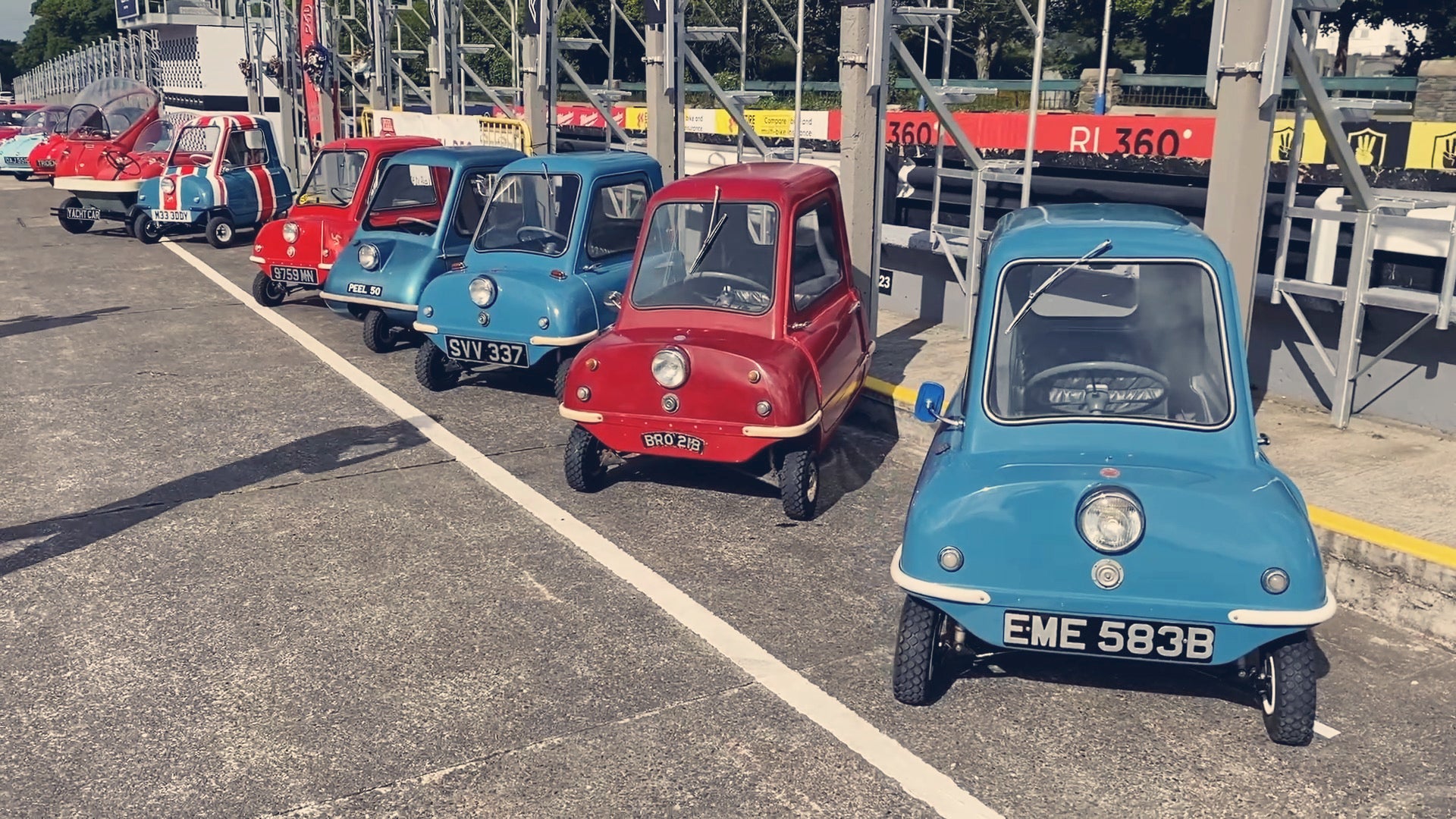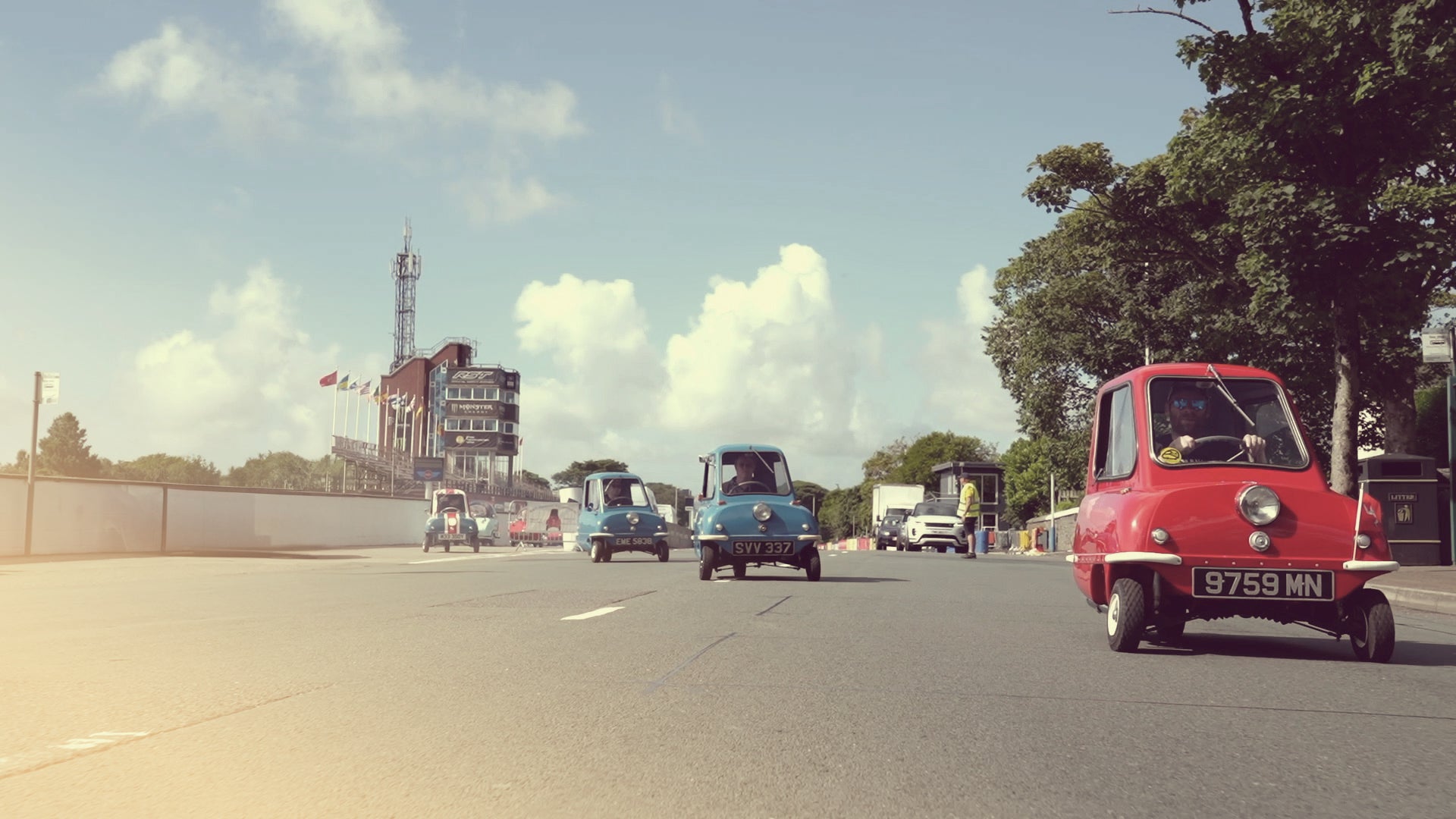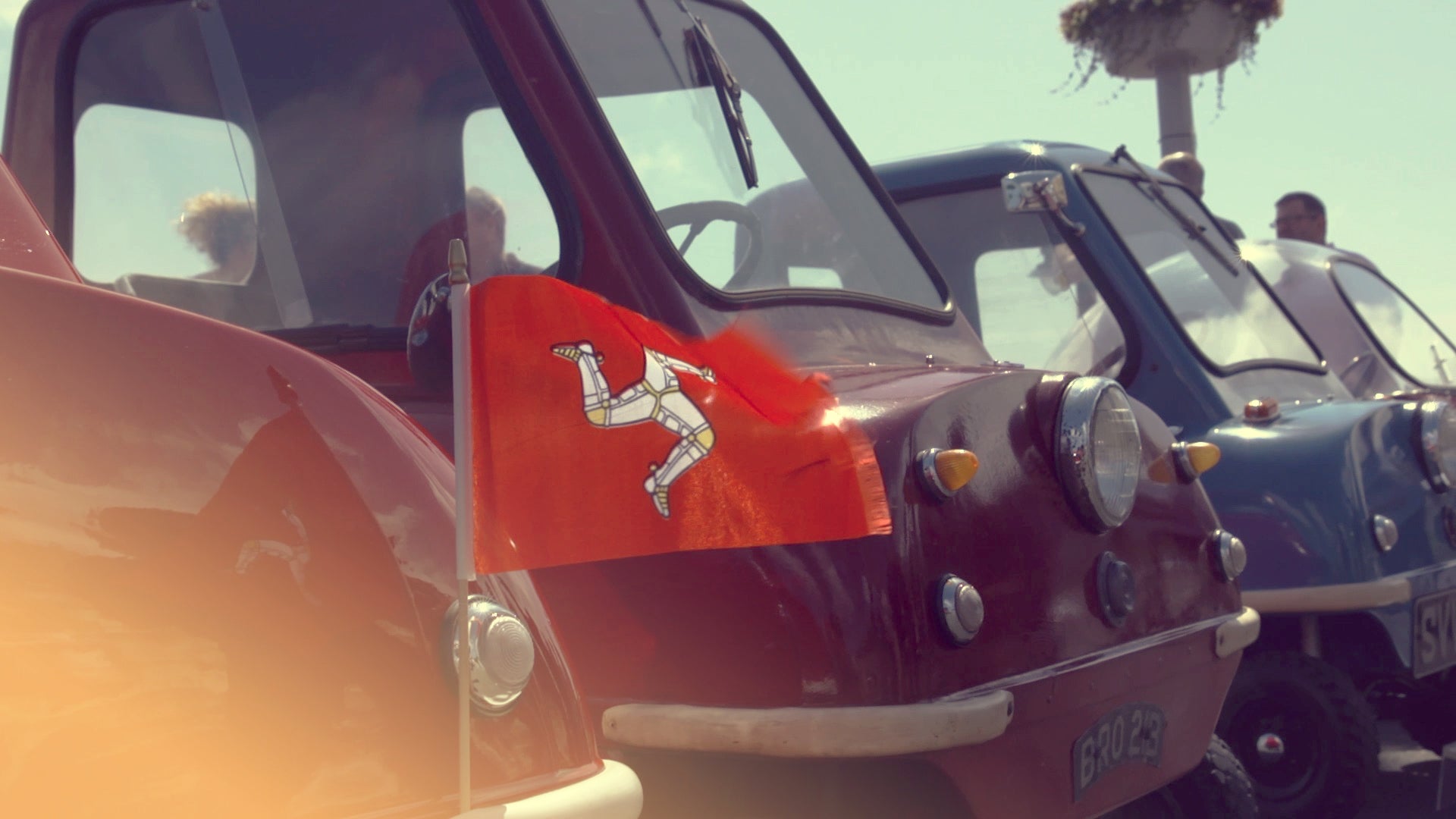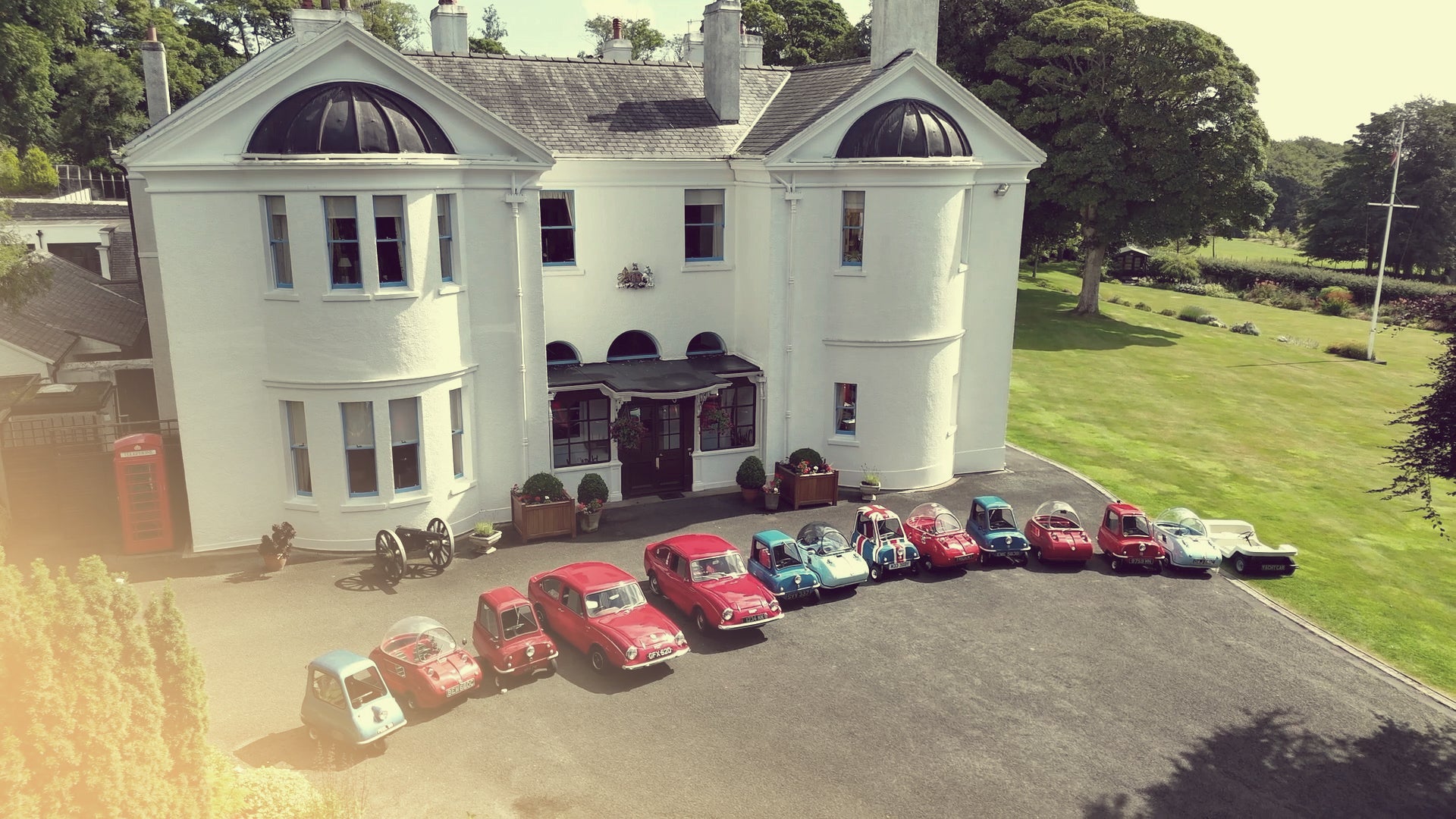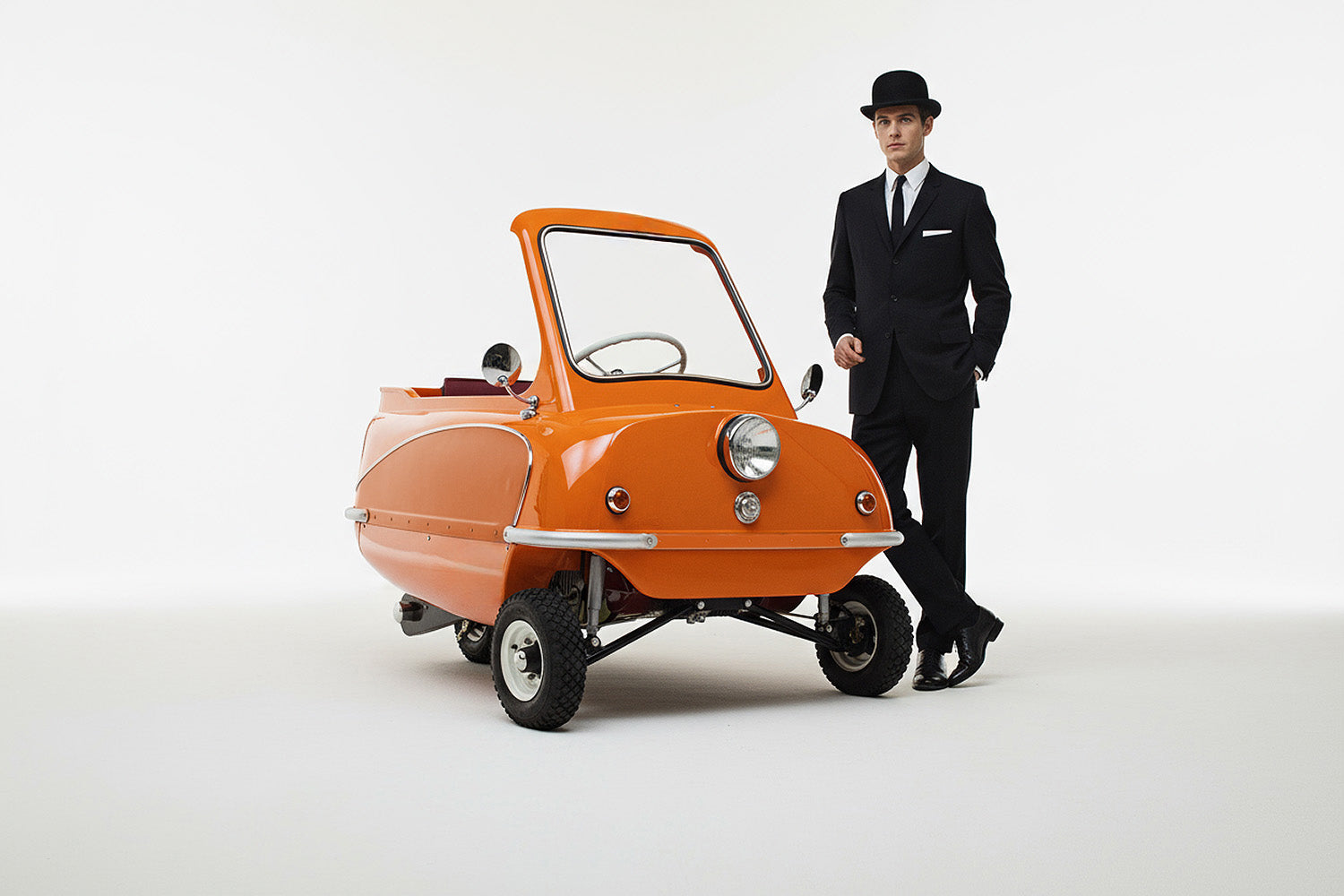
The World’s Smallest Car Reborn as a Convertible
The Peel P50 Cabriolet takes a 1960s motoring marvel and gives it new life. Hand-built, electric, and unmistakably British, it turns every drive into an adventure.
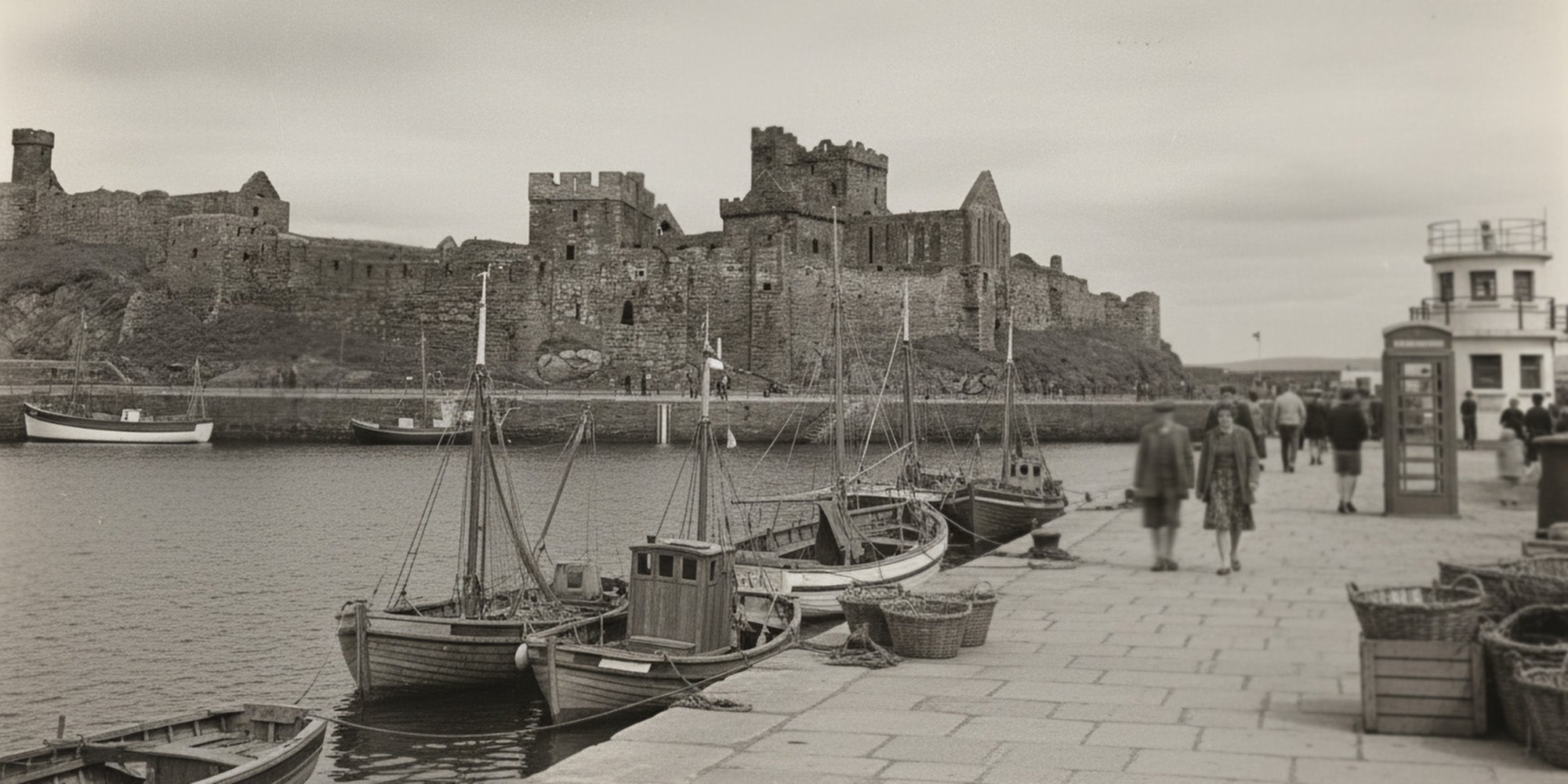
Where it all began
In the early ’60s, in the seaside town of Peel on the Isle of Man, a boatbuilder decided cars were too big. His answer? A car smaller than a phone box — and just as British.
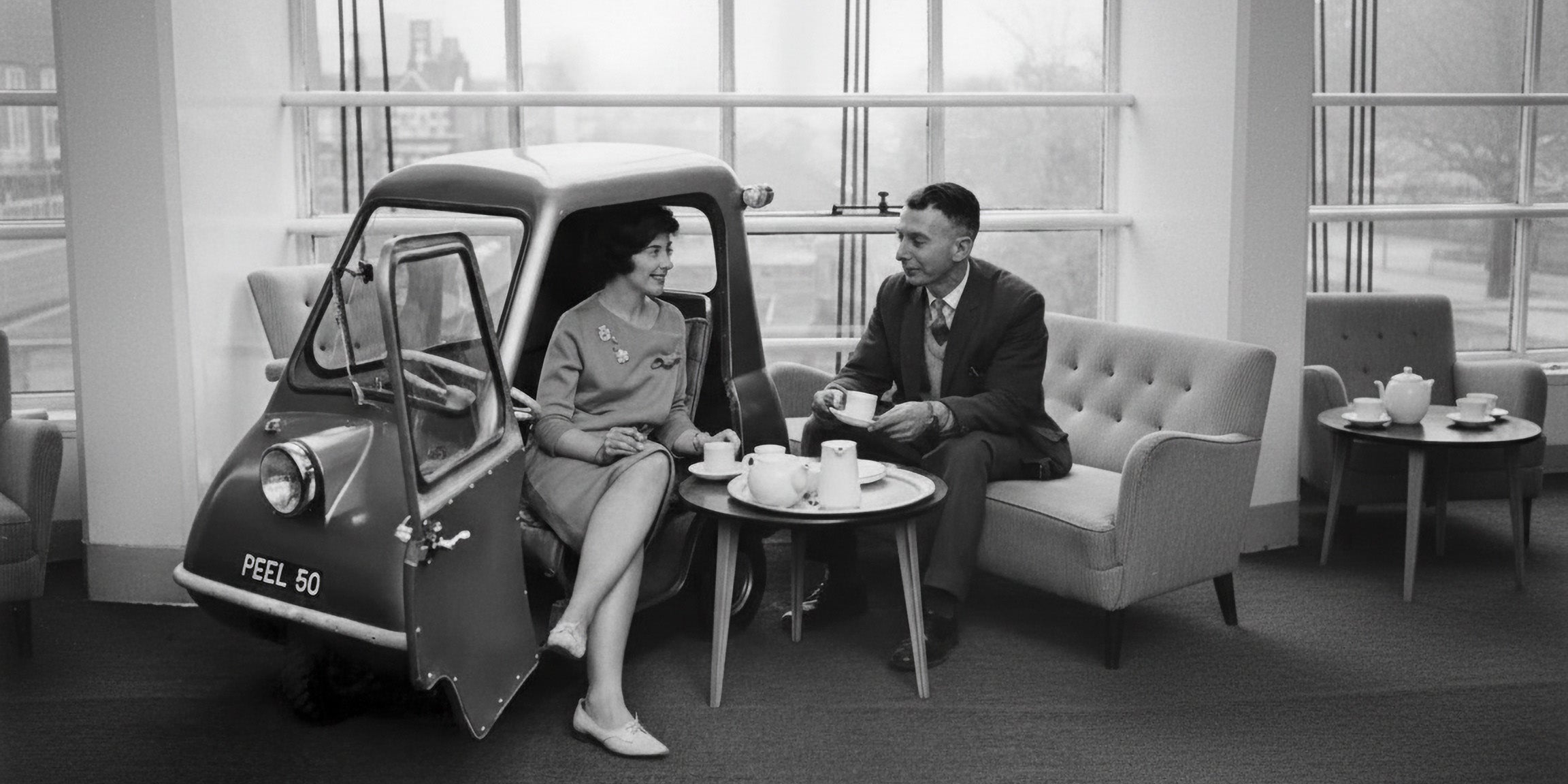
Tiny Car, Big Stage
At London’s 1962 Earls Court Show, inventor Cyril Cannell rolled out his one-seat wonder. One wheel at the front, two behind, and an audience who couldn’t believe their eyes.
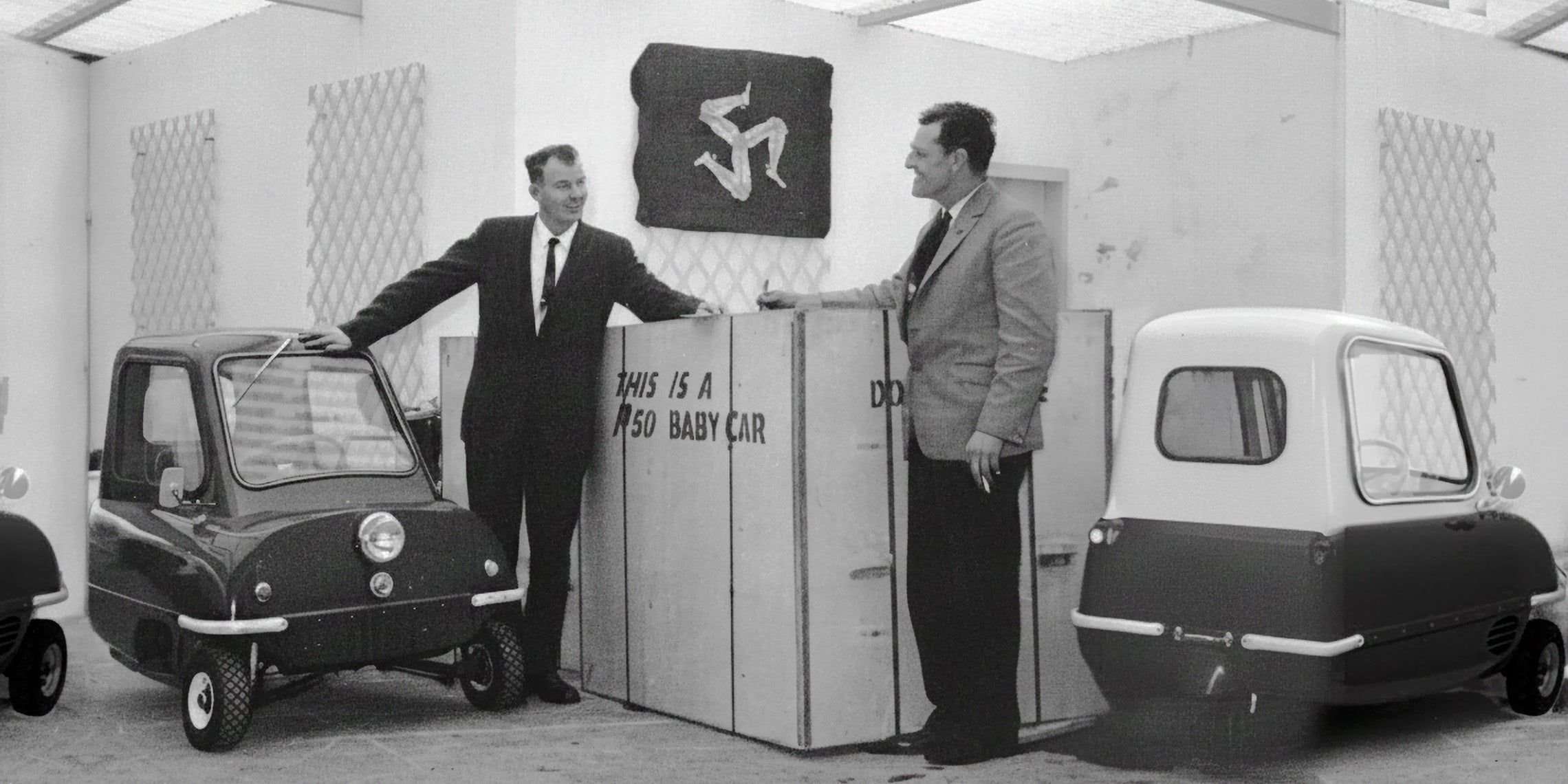
Baby Cars, Boxed and Ready
By 1964, the Peel P50 was in production. Cyril and Henry Kissack packed their “baby cars” into wooden crates bound for the world — proof that the tiniest car could make the biggest journey.
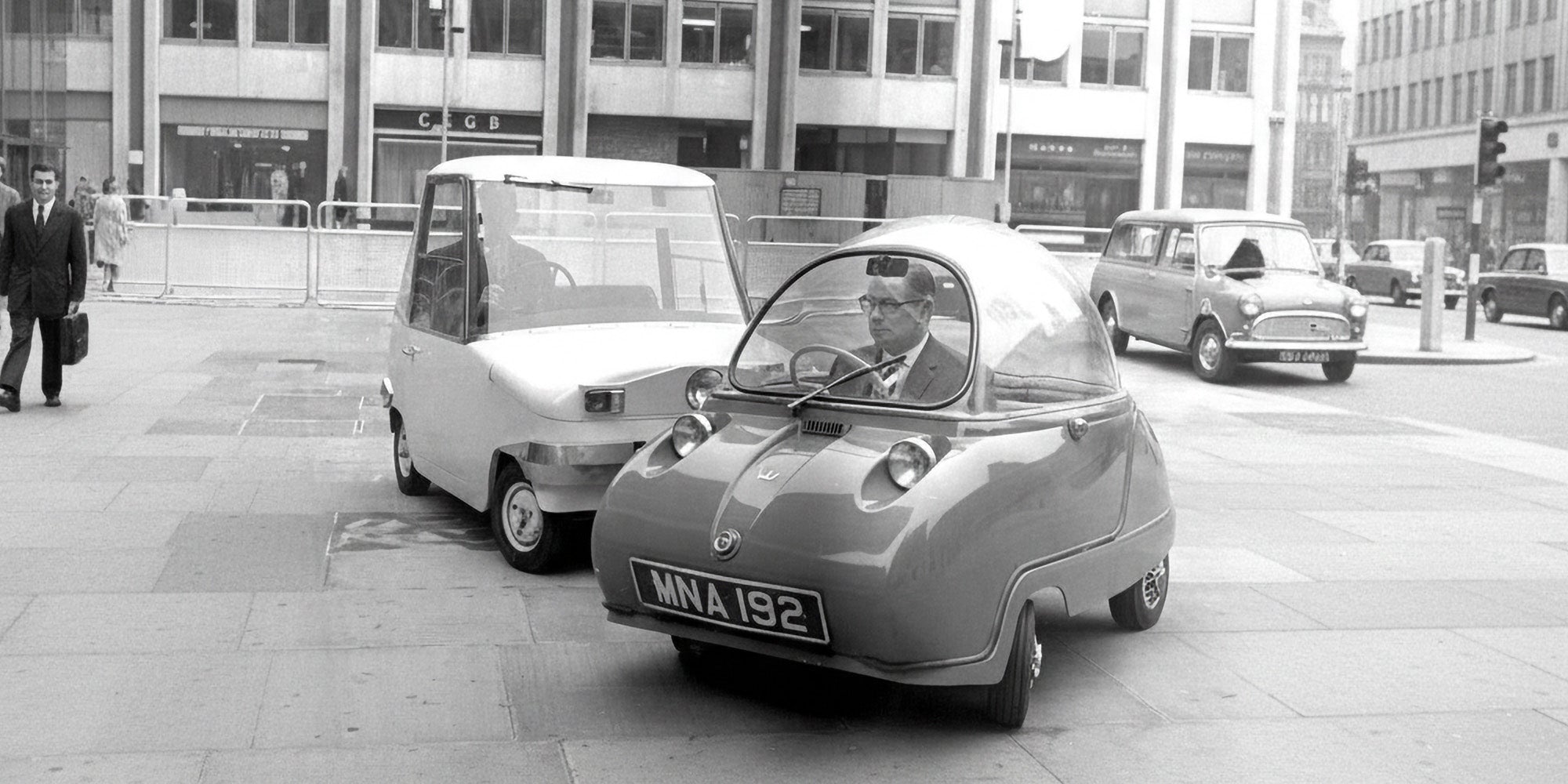
Ahead of Its Time
Peel didn’t stop at the P50. In 1965 came the space-age Trident, and a year later an electric four-wheeler tested on London streets. Long before EVs were fashionable, Peel was already plugging in.
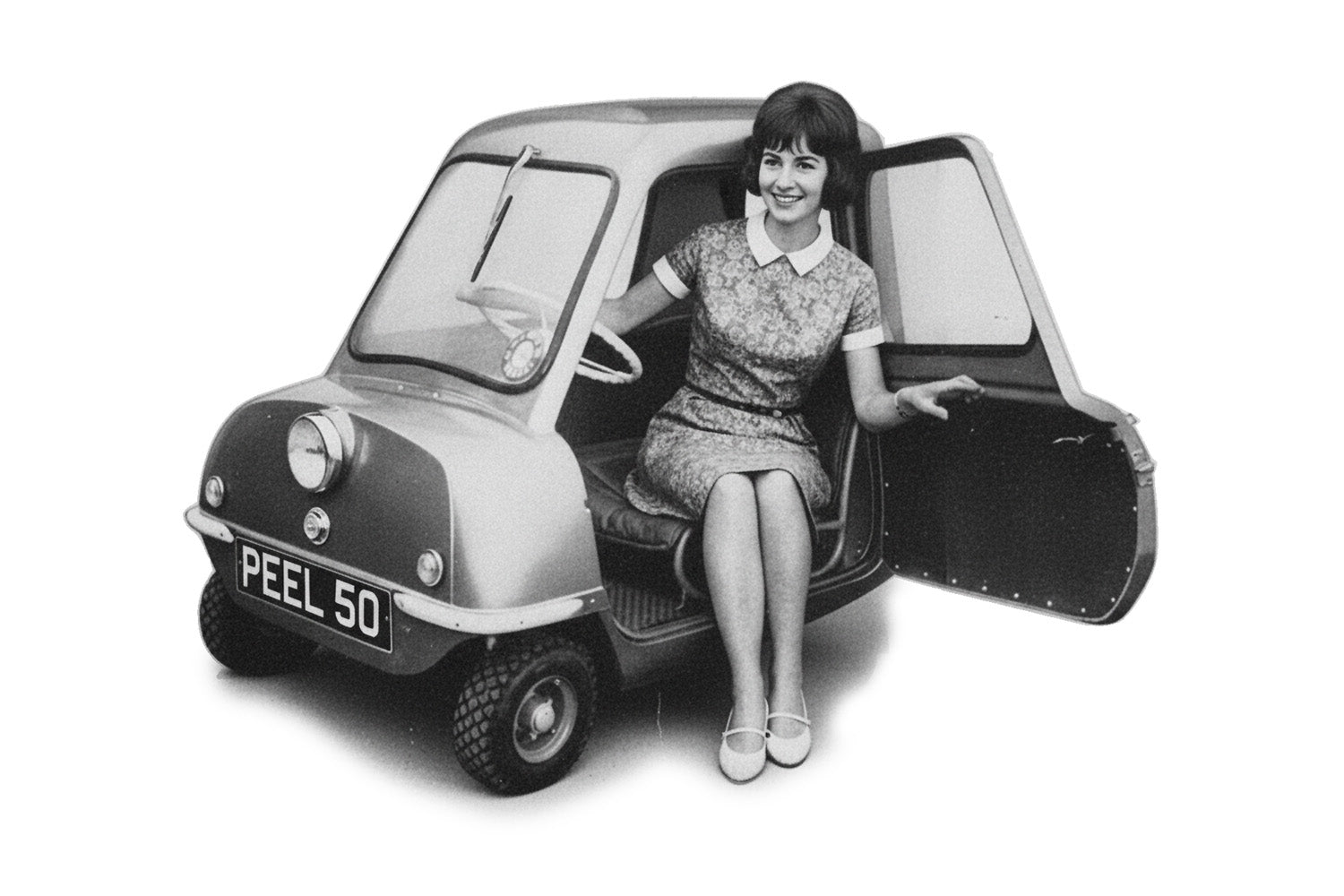
World’s Smallest Wonder
In the swinging sixties, Peel built the world’s tiniest car on the Isle of Man — one seat, one shopping bag. Fewer than 50 ever existed. Today, the icon returns as a drop-top.
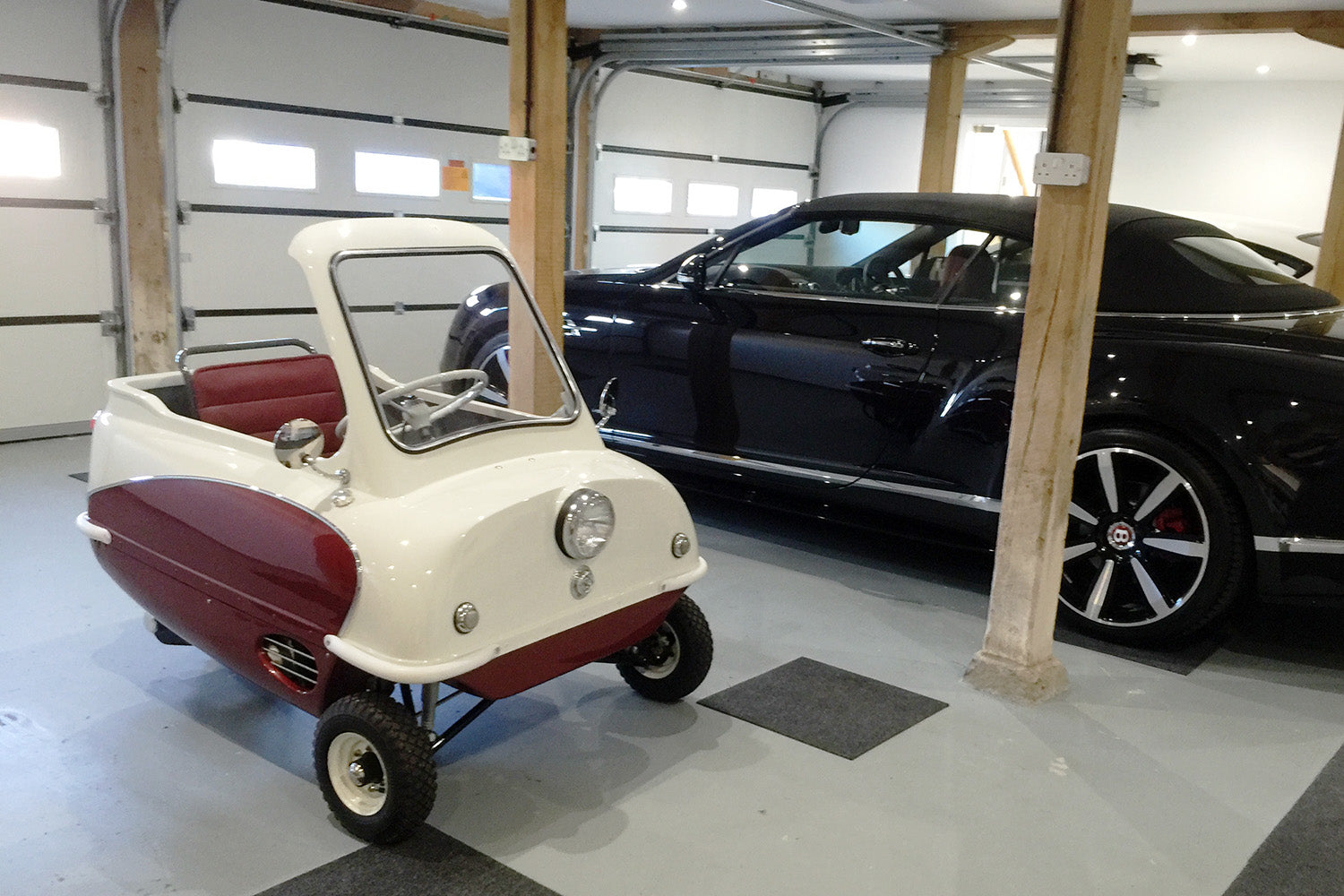
From Palace to the Promenade
Years later, the Peel P50 was reimagined as a one-off convertible, commissioned as a gift for the Emir of Qatar and finished in the nation’s flag colours. Now part of the royal collection, the response was so strong that we brought the Cabriolet into production. Today, it’s available in the USA — rare, distinctive, built to stand out.
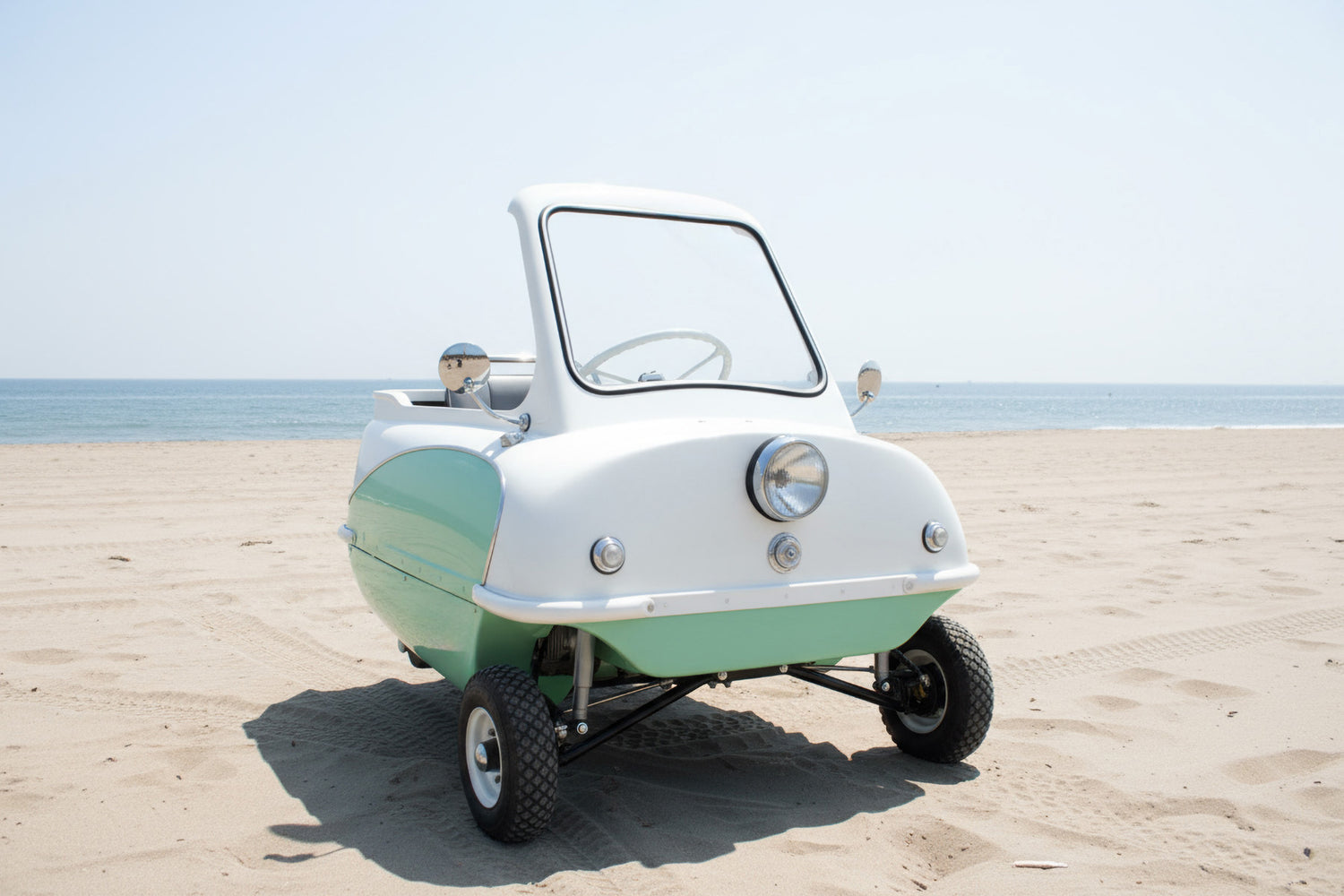
Still Smallest, Now Electric
The Peel P50 Cabriolet goes electric: classic 1960s style meets modern tech. Powered by ultra safe lithium batteries, it’s smooth, quiet, and zero-emission. Just plug into any 110v outlet — no special gear required. Light, fun, and full of character, the Cabriolet makes every drive an adventure.
